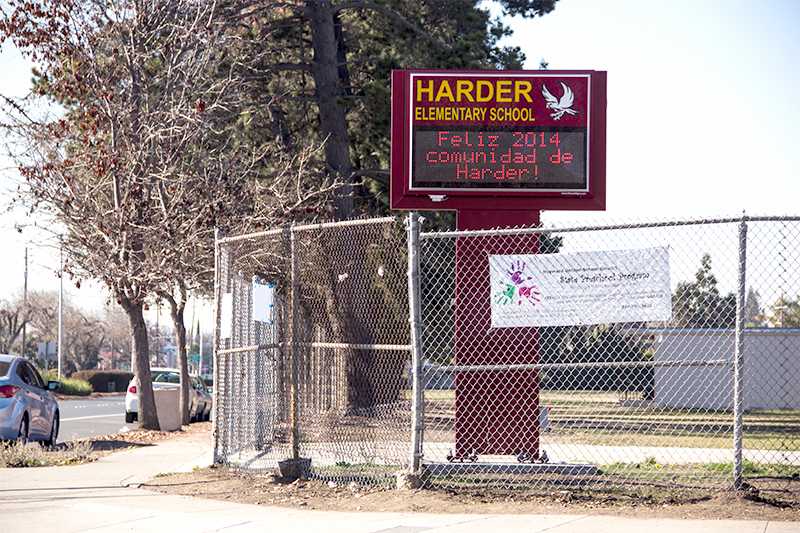Hayward schools work to help students struggling with English
The Hayward Unified School District serves a significant population of English Learner students.
Students learning English as a second language in Hayward elementary schools are striving to overcome barriers that affect their academic performance.
The Hayward Unified School District says it is working hard to find solutions to help these students, classified as “English Learners,” excel and improve the district’s low test scores.
“Our [English Learners] come from diverse backgrounds,” said Matt Wayne, assistant superintendent of the school district. “Approximately 35 percent of our students are [English Learners]. While a majority is Latino, we also have numerous [English Learners] from Filipino, Chinese, and Vietnamese backgrounds.”
Sixty percent of kindergarten students in Alameda County are English Learners coming from Spanish-speaking households, the California Department of Education Data Reporting Office states. Similarly, 62 percent of first graders in the county are also English Learners who speak Spanish as a first language.
Hayward’s school district is working to meet the challenge on several fronts, said Sandra Escobedo, administrator of the English Language Learners Department.
The district is training teachers how to work better with bilingual students, calling on expertise to devise core curriculum and lesson plans, piloting a dual language immersion program and innovating with a new curriculum for long-term English Learners at two middle schools, Escobedo explained.
She argues that overcoming the challenge could also be changing people’s mindset to accepting multi-lingual education.
“I think one challenge we face is that it is seen that when a student comes with another language it is a ‘difficulty.’ In other countries, it is expected that students learn more than one language in school,” said Escobedo.

But teachers argue that teaching a bilingual community means having to give instruction and speak in two languages. Teachers in Hayward’s school district are assisted by a total of 36 fulltime Hispanic paraprofessionals who are trained but not licensed to teach, school records show.
Most Hispanic English Learners come from underprivileged and non-English speaking families, according to school data posted online. This too can be a burden for the teacher because there is no at home support with schoolwork, English language teachers say.
However, teachers have learned to compensate, said Wayne.
“Teachers have learned strategies to help [English learner] students learn specific subjects. For example, they will explicitly teach the academic vocabulary that English learners need to know,” he stated.
“They also will use different engagement strategies to involve [English Leaners] in the lesson, such as providing sentence frames to help them participate,” he explained.
“Teachers also work to take advantage of the strengths of our English learners. For example, many of our Spanish speaking [English learner] students know words in Spanish that have the same cognate as an English word, for example, “instruction” in English and “instruccion” in Spanish,” he said.
Wayne added that teachers must learn how to change their teaching methods to support students who are still learning English with ensuring students are meeting the standards set by the state. Classes are available at the elementary and secondary level for students who need additional instruction.
Despite all the support, bilingual teachers in Hayward say they must work twice as hard as teachers who don’t have to deal with a large number of students not fluent in English. They note the extra time they must spend on strategizing ways to engage non-English speaking students slows down their ability to meet academic requirements.
Data from schools in Dublin, Calif. and that of the Hayward’s school district reflect the unique challenges Hayward teachers face.
Comparing the Academic Performance Index scores of two schools in these districts, as recorded by the Department of Education, Analysis, Measurement and Accountability Reporting Division demonstrates the differences.
Harold William Kolb Elementary in Dublin serves 434 students. 73 of these students are English learners. In 2013’s API report, released by the California Department of Education, the school scored 930 in the 2013 API report with an increased of 19 points over its 2012 score.
Tyrrell Elementary in Hayward, with a similar student population, 380 of whom were English learners, scored 686 in the 2013 API report, dropping 25 points from its 2012 score.
Although English learner students in Hayward have not met the API target score of over 800, they improved by 7 points in 2013, the data shows.
In the meantime, Hayward’s school district is exploring other avenues to improve its scores. Burbank Elementary in Hayward is piloting a new bilingual education system, focused on Spanish and English, for the 2014-2015 school year.
Yet, Burbank Elementary is not the first school in the district to pioneer this innovative form of education. In 2007, Stonebrae Elementary in Hayward created a bilingual education program of its own, with Mandarin and English at its core.
“The English learners there scored 824 of the state’s API. We have EL Specialists who work at schools with teachers to ensure that the students’ progress is being monitored and that we provide support if an English learner student needs additional help,” said Wayne.
The district is calling in Silvia Dorta-Duque de Reyes, a national linguistic expert and Spanish Language Arts Coordinator, to help develop core standards, align curriculum and devise lesson plans to apply changes.
She has reportedly undertaken a similar service for the San Diego Office of Education, where the Common Core Translation Project developed standards-based instruction with a view to implement the new California Common Core Standards.
De Reyes “is focusing on the cognitive and linguistic needs of English learners,” said Escobedo. “She is providing training on Common Core integrated writing, reading and science to K-2 Structured English Immersion and bilingual teachers.”
“She is also modeling integrated close reading lessons that demonstrate for teachers how to provide rigorous access to the California Common Core Standards for English learners using the English Language Development standards to scaffold,” Escobedo said.
Other plans Hayward’s school district has to improve the performance of students struggling with learning English include extending assistance all the way to middle school.
“We are piloting a new curriculum for long-term ELs at two middle schools. English 3D developed by Kate Kinsella provides academic language, literacy, and writing from sources, which are all aligned to the Common Core Literacy Standards in ELA, Social Science, and Science,” Escobedo said.
Kinsella, Ed.D, Ph.D., is a teacher educator in the department of secondary education at San Francisco State University. She teaches coursework planning for middle school educators and is a published author.
“To support mainstream, sheltered, and English learner teachers at the middle schools, we have provided seven days of training around argument writing, with a focus on supporting EL students with close reading and writing from sources,” Escobedo said. “We have provided language frames for speaking and writing about text sources, which scaffold for English learners at all three levels: emerging, expanding, and bridging,” she added.
While Hayward’s school district performed below target, according to the API report it did outperform Oakland Unified School District by one point. Oakland’s school district has a significant population of Hispanic and English learner students in the elementary schools.


















